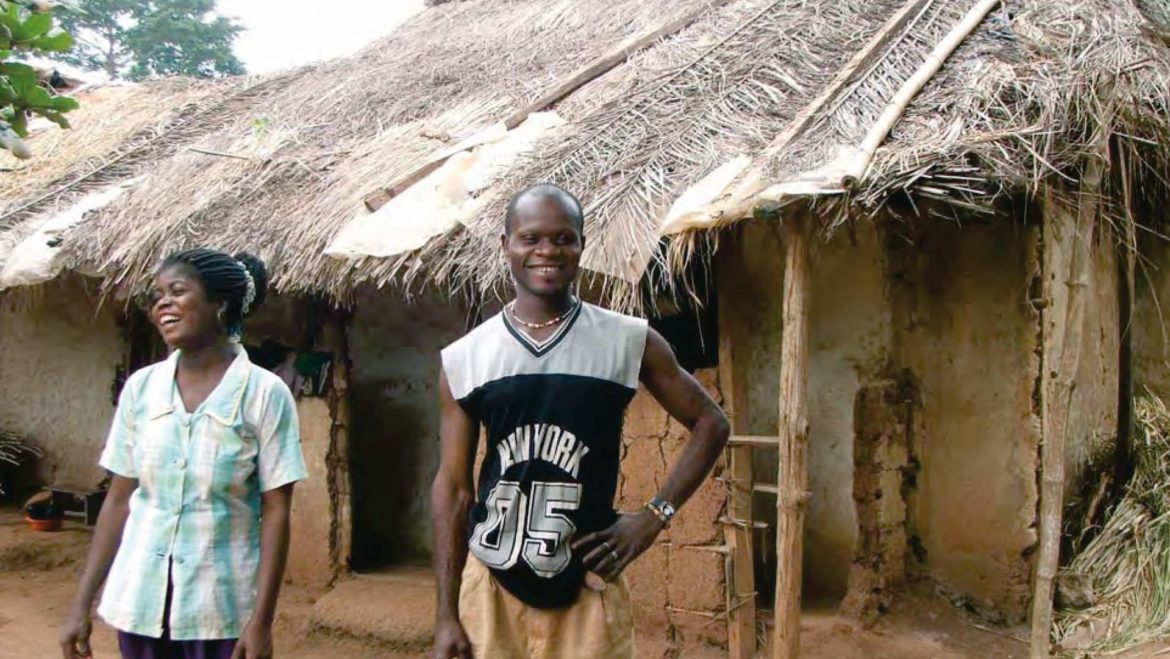Summary
A resettlement process was undertaken at Newmont Ghana’s Ahafo mine. Because of the demographic profile of the community – many small farmers and some vulnerable households – the company partnered with a range of local organizations in order to develop a tailored resettlement process.
Context and challenge
Newmont Ghana’s Ahafo mine is located around 180 miles north-west of Accra. Prior to the development of the mine, which was home to around 500 families, the company undertook a study to identify whether it would be possible to avoid the disruptive process of community resettlement, which it viewed as a last resort. However, since there were no other viable options, the company instituted a resettlement process for the primarily agricultural community.
Response
Negotiation on behalf of the community was undertaken by a Resettlement Negotiation Committee, which comprised community representatives and traditional authorities. Via this committee, some members of the community opted for monetary compensation rather than resettlement. Payment was conditional upon proof that the individuals had alternative homes to relocate to.
An initial group of 2,200 people were resettled to two new villages in 400 purpose-built homes, at a cost of US$14 million. The homes and residential plots came with legal title (99-year leases), the first time that the families had owned such title to the land. Prior to resettlement, traditional ownership arrangements had prevented members of the community from legally owning their properties.
Agricultural smallholdings
The main issue raised by the communities was the loss of land and, in turn, the ability to earn a living. Replacement plots were given to residents who lost their residential land, and farmers whose crops were disrupted received monetary compensation.
There was some disagreement over prices paid for cocoa crops that had been disrupted by the resettlement. In response, the company created a “crop review committee” drawn from the community, NGOs, traditional authorities and government agencies.
There was also disagreement over the lack of compensation for fallow land. Despite being in accordance with Ghanaian law in not providing compensation in this case, the company decided to explore mitigation measures for individuals who had lost fallow land.
Some people found alternative livelihoods to farming, including employment at the new mine, or in small businesses supplying the mine with goods and services, but there were some concerns regarding a perceived lack of youth employment opportunities, particularly in agriculture. In response, the company launched an agricultural improvement and land access program to help farmers increase their crop productivity.
The program offered five agricultural assistance packages, and monetary assistance. Initially, the program targeted around 4,000 farmers. Two thousand individuals formally registered and 400 received assistance packages and begun new farms as a result.
Outcomes and lessons learned
The company worked closely with the community during the resettlement process, drawing on external expertise where necessary, and responded quickly and effectively to concerns raised along the way, going beyond legal requirements where necessary. The company ensured that the main source of employment not only continued, but was strengthened, following resettlement. In addition, the company ensured that vulnerable populations were specifically supported during the relocation. Full resettlement disclosure documents available at: www.newmont.com/africa/ahafo-ghana/public-disclosure-documents
Sources:
Newmont website – 2007 community development case studies, accessed 10 January 2009 from:
www.beyondthemine.com/2007/?l=2&pid=240&parent=253&id=303
“Independent assessment of resettlement implementation: Ahafo South Project” (August 2005) prepared by Frédéric Giovannetti, a resettlement consultant, for Newmont and the IFC
“Independent monitoring of resettlement implementation: progress update” (January 2006), Newmont Ghana Gold Limited.
“Report on vulnerable program: Ahafo South Project” (April 2006) prepared by planning Alliance for Newmont Ghana Gold Limited

